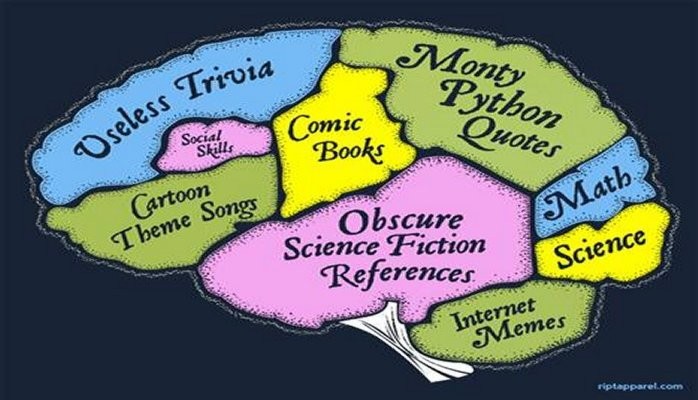
Lock Your Brand into Consumers' Memory with The 3X Rule
A simple blend of neuroscience, psycholinguistics and social anthropology -- Wait! Keep reading! I know it sounds bad but it works great! It's known collectively as The 3X Rule -- can have a substantial impact on marketing and branding efforts.
Here's how this simple blend works in branding:
1) Neuroscience - Memory and Sensory
Information gets stored in long term and short term memory. Short term memory stores information we need immediately; phone numbers, the names of people we've just met, things like that. Important information is transferred from short term to long term memory, and our brains determine a memory's importance by its emotional content.
Good, bad or neutral, a memory's emotional content is what causes branding.
Marketers want consumers to have positive, deep emotional commitments -- what's called ego-identification -- to their brands. That emotional commitment requires repetition and reward; consumers need to hear your message often and associate "goodness" with it.
Even long-term memories can be forgotten without sensory information to lock them into place. This is why certain songs, certain images, certain smells and certain people can evoke strong emotional memories while other things go unnoticed.
Sensory information -- sight, sound, smell, taste and touch -- is easy to add to branding efforts. Color, font size, images, embedded video and audio, and well written text can cause sensory attachments to otherwise neutral information.
2) Psycholinguistics - Words, Sentences and Voice
We use "small words" rather than "monosyllabics" when talking to children because small words are easier to understand. "Small words" and "monosyllabics" mean the same thing and most people take longer to understand the latter than the former.
That time difference in understanding has to do with neural processing and actionability. People don't look for subtleties of meaning with small words because small words are easy to pay attention to and respond to. Understandability combined with a lack of subtlety translates into actionability.
People respond more easily and rapidly to simple statements rather than complex ones. Short, declarative sentences written clearly are more easily incorporated than complex parsings involving multiple conjunctives, disjunctives and grammatical elements.
Consider where you slowed down when reading the above and you get the idea.
Voice can be active or passive. Active Voice means sentences have a "subject-verb-object" structure. A form of active voice is Direct Address and means someone is talking directly to you. Direct Address combined with Active Voice creates a sense of motion, action, sometimes urgency, and a need to act/respond to message.
Brands can use Active Voice and Direct Address to increase consumer action and response by using them in the first sentence of a message then quickly follow with a conversational mix of active and passive voice, direct and indirect address. The mind responds to the active voice, direct address, then incorporates it with the emotional tone of the conversational message. The brain interprets the combination as "Oh, this is important. I'll listen to what they have to say."
3) Social Anthropology - Mirrors
The single strongest branding element is trust. If someone you trust tells you that something is great, you believe them. Studies have shown that the highest levels of trust are with family members followed by peer group members.
Consumers automatically assign positive emotional values to branding information when the brand spokesperson looks like them, talks like them, acts like them and thinks like them, what's called a mirror-self. The more a brand spokesperson is the target audience's mirror-self the more the target audience accepts the brand message.
Example
Many brands use these elements individually already. Real marketing power comes when they're used together in a comprehensive multi-channel campaign.
- Mirror, Voice - Amateur, self-produced videos of brand owners emphasizing desired brand features, elements, concepts, models, etc.
- Sensory, Mirror - These videos are used on all media channels
- Sensory, Mirror and Memory - All viewers are invited to vote on the best videos. Brand owners are invited to vote and upload their story. Winning videos and randomly selected voters win some prize.
- Words, Sentences, Mirror, Sensory, Voice and Memory - Voters are asked to vote in two categories only: Brand and Story. "What video gave you the best sense of the brand?" and "What video had the best story about the brand?" This element alone causes the greatest neural activity regarding the brand due to its "evaluative" nature.
Summary
It's easy, simple and straightforward to make use of the brain's natural tendencies to brand your audience. This short introduction brings several simple principles together to put your brand through the roof quickly and for less money than you might think. Brands can easily see 35% lifts minimum when The 3x Rule is applied properly.
Story Alchemist
9yNot only would this apply to business branding but all other types of conversations. The author, the musician, the politician.... Great summary Joseph.
Great summary of important tips. Thank you Joseph.